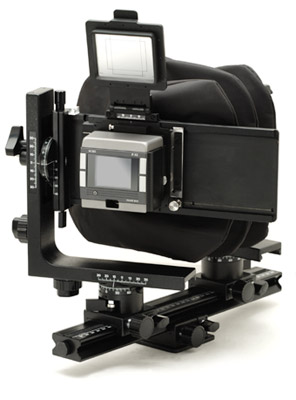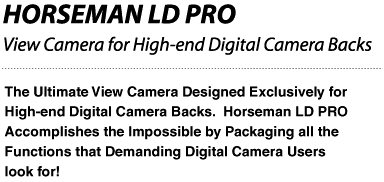| Bellows adjustments are possible at the front and rear. Swing and center tilt can cover a full 360 degrees*2 (at the image center). Maximum rise and fall are 30mm in either direction, and shift also comprises up to 30mm either way. By combining rise, fall and shift, images can be "stitched" together for novel effects. As bellows movements are performed by an ultra-precise rack-and-pinion drive, inaccuracies between successive pictures are held to an absolute minimum, making post-editing an easy task. |
|

•While applying rear tilt, vertical "stitching" is not possible with normal rise-fall adjustments.
•"Stitching" is also limited by the diameter of the lens image circle and by vignetting due to the camera's lens mount.
*2 Limited by maximum bellows extension |





